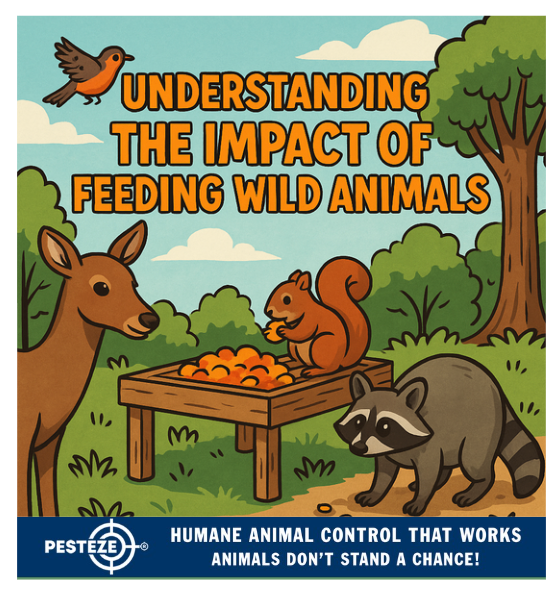UNDERSTANDING THE IMPACT OF FEEDING WILD ANIMALS

UNDERSTANDING THE IMPACT OF FEEDING WILD ANIMALS
SUMMARY
Feeding wild animals may feel compassionate, but it disrupts natural behaviors, poses health risks, and creates long-term problems for both animals and people. This guide explains why feeding wildlife is harmful and what you can do instead to support them responsibly.
FEATURES
-
Disrupts natural instincts: Animals lose survival skills when reliant on humans.
-
Increases human-wildlife conflicts: Animals may become aggressive or dependent.
-
Spreads disease: Shared food sources increase the risk of transmission.
-
Harms ecosystems: Feeding alters animal movement and population balance.
-
Risks to human safety: Larger animals may approach homes or roads.
-
Better alternatives exist: Support habitats and conservation efforts instead.
GUIDE DESCRIPTION
Wild animals are an essential part of ecosystems, adapting to find their own food, shelter, and water. While many people think they are helping by feeding animals like birds, deer, raccoons, or squirrels, this practice can have unintended and harmful consequences. Understanding the risks is key to protecting both wildlife and human communities.
One of the biggest issues with feeding wild animals is that it disrupts natural instincts. Animals that rely on human-provided food may lose their ability to forage, hunt, or migrate as they naturally would. Over time, this dependency can reduce their survival skills and harm future generations.
Feeding also increases human-wildlife conflicts. When animals learn to associate people with food, they are more likely to approach homes, parks, and urban areas. This can lead to aggressive behavior when food is withheld, property damage, or even attacks in rare cases. Once animals become “nuisance wildlife,” they are often trapped or euthanized, creating unnecessary loss.
Another danger is the spread of disease. Shared feeding sites encourage animals to gather in unnatural numbers, increasing the chance of transmitting parasites, viruses, and bacteria. Diseases like rabies, distemper, and mange can spread quickly in these conditions, sometimes affecting pets and humans as well.
Beyond individual animals, feeding can harm ecosystems. By artificially boosting food availability, humans can cause animal populations to grow beyond what the environment can support. This disrupts predator-prey relationships, harms vegetation, and shifts migration patterns, leading to long-term ecological damage.
Feeding wild animals also creates safety risks for humans. Deer or bears drawn to roads and neighborhoods increase the chance of vehicle collisions and property damage. Smaller animals like raccoons or squirrels may invade attics and sheds once they associate human spaces with food.
Fortunately, there are better alternatives for those who want to help wildlife. Supporting natural habitats through native planting, reducing pesticide use, and conserving water sources allows animals to thrive without direct feeding. Donating to or volunteering with wildlife rehabilitation and conservation organizations also makes a positive impact.
By avoiding direct feeding and instead supporting ecosystems, you protect animals’ independence while ensuring safer coexistence.
- Saneeth Thota


Comments 0